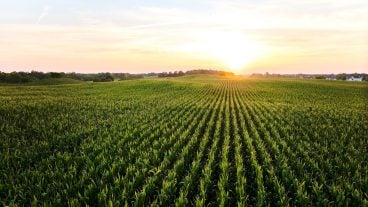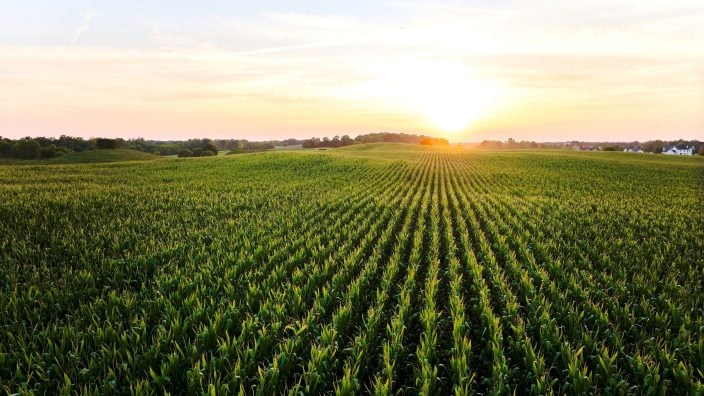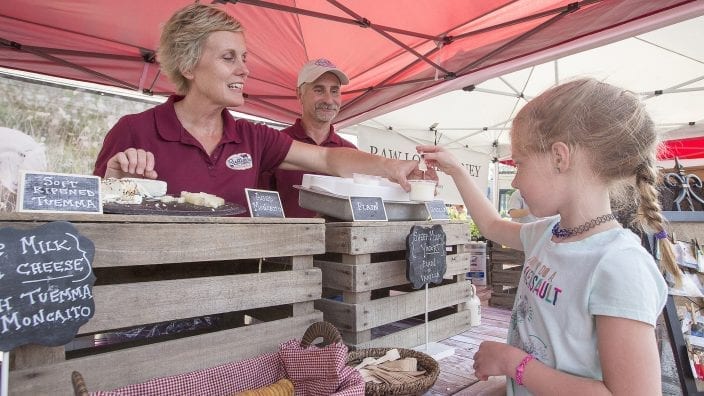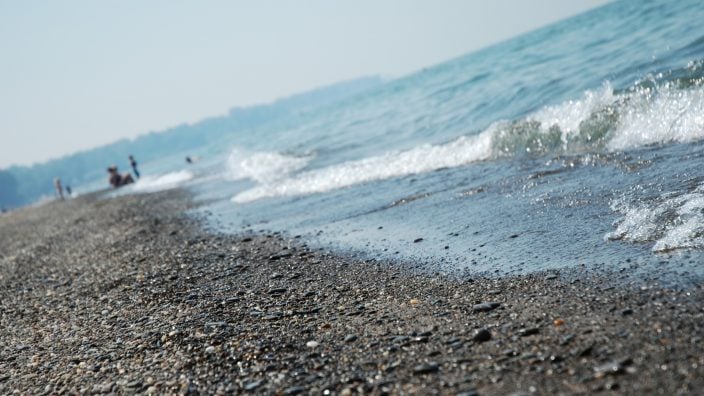Farmer’s Guide to Trucking Regulations available to Ohio Farm Bureau members
The guide includes a farm driver checklist, overview of state and federal regulations and exemptions, CDL qualifications and more.
Read More
NOAA and its research partners predict that western Lake Erie will experience a harmful algal bloom (HAB) of cyanobacteria this summer that is smaller than in 2017 but larger than the mild bloom in 2016.
Scientists expect this year’s bloom to measure 6 on the severity index, but could range between 5 and 7.5. The severity index is based on a bloom’s biomass – the amount of its harmful algae – over a sustained period. The largest blooms, 2011 and 2015, were 10 and 10.5, respectively. Last year’s bloom had a severity of 8.
However, the size of a bloom is not necessarily an indication of how toxic it is. The toxins in a large bloom may not be as concentrated as in a smaller bloom. NOAA is developing tools to predict how toxic blooms will be.
Ohio Farm Bureau’s Senior Director Policy Development and Environmental Policy Dr. Larry Antosch discusses the forecast in this interview.
Some excerpts:
Antosch: The annual forecast is based off of a series of models that are running simulations looking at streamflow down the Maumee, weather conditions, lake conditions and using the back data to make a projection as to how severe or how large the algal bloom will be. This is like the seventh year that they’ve been doing it and they’ve come up with a severity index of 1 to 10 in terms of how large or the extent of the bloom is in August. So, for this year the projection was that it should be somewhere around a 6. So not super high, not super low something kind of in the middle, again based off of free flow or in the amount of rainfall runoff that’s occurred from beginning March through the end of July.
Antosch: Just because there is an algal bloom present it doesn’t have any direct relationship or necessarily with the amount or the toxicity of the bloom but just because algae or blue green algae is present doesn’t mean that it’s a harmful environment. (Forecast does not include toxicity of the bloom)
Antosch: Well I think one of the things is that, and again the numbers I think are showing that, the conservation practices nutrient management, fertilizer management, soil testing, cover crops all of that are having an impact and having a positive impact and influence on our water quality. There’s probably more that can be done, more opportunities are available to do more and also with the ongoing research and things that we’re seeing, not only those types of land management practices, but we need to start thinking about how do we manage the water in a greater extent.
Antosch: If we are seeing higher frequency of the short duration storms of the skies opened and we get the one inch or two inches in a relatively short time, we need to think about it and start implementing practices or things that will start slowing down that water. Drainage, water management some other retention type things. So, continue what we’re doing, start looking at how can we manage those extreme events better and to realize that it takes time for the systems to readjust and so things that we’re doing today may not have their full impact in terms of making a difference until five or 10 years from now.


The guide includes a farm driver checklist, overview of state and federal regulations and exemptions, CDL qualifications and more.
Read More


The emergency fuel waiver to allow the sale of summer gasoline blends containing 15% ethanol will lengthen the period during which Americans can continue buying E15 from June 1 to Sept. 15.
Read More

The Small-Scale Food Business Guide covers federal and state regulations for selling food products such as raw meat, dairy, eggs, baked goods, cottage foods, fruits and vegetables, honey and more.
Read More

New resources and technology are broadening the different types of sales tools and strategies available to farmers.
Read More

ODA will enroll 500,000 acres into the program for a two-week sign-up period, beginning April 22, 2024, through May 6, 2024. Contact local SWCD offices to apply.
Read More

Katie Share of Columbus has been named ExploreAg and Youth Development Specialist for Ohio Farm Bureau.
Read More

Mary Klopfenstein of Delphos has been named Young Ag Professional and Ag Literacy Program Specialist for Ohio Farm Bureau.
Read More

The plan has been updated to give sole proprietors access to more rate stability and a smart solution that offers potential savings on health care.
Read More

The American Farm Bureau Federation, in partnership with Farm Credit, is seeking entrepreneurs to apply online by June 15 for the 2025 Farm Bureau Ag Innovation Challenge.
Read More

Adele Flynn of Wellington has been elected treasurer of the Ohio Farm Bureau Federation and now holds the third highest elected office in Ohio’s largest and most influential farm organization.
Read More